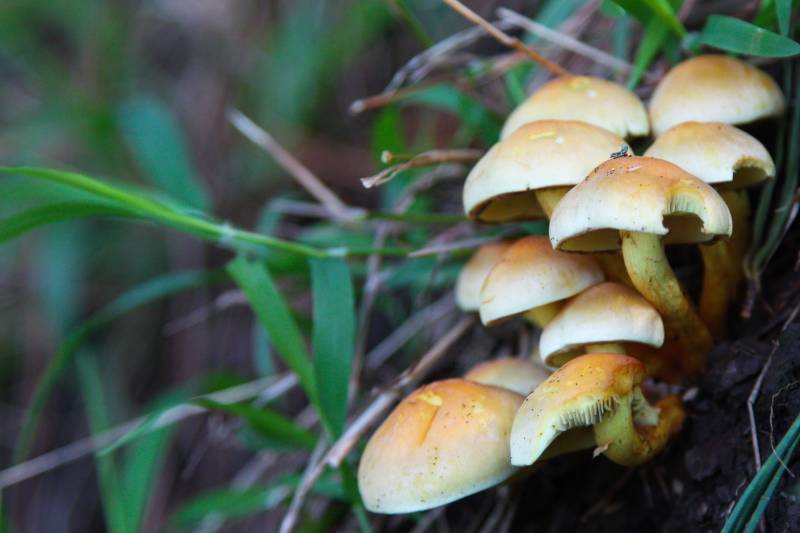In the past few weeks, the Bay Area has received a deluge of rain. In addition to replenishing groundwater and aquifers, the rain has allowed a particular species to prosper — the mushroom, our tiny little fungal friend. Mushrooms have been springing up in forests and backyards, potted plants and dark corners.
With all that’s going on in the world, it might be easier to ignore the humble mushroom, but KQED Forum took the time to discuss finding and foraging mushrooms in the Bay Area.
KQED’s Alexis Madrigal spoke with Tony Alvarez, a member of the North American Mycological Association and leader of group foraging sessions called Shroomy Walkabouts, and Paul Stamets, a renowned advocate for the ingenuity and utility of fungi.
The following excerpts have been edited for length and clarity.
Alexis Madrigal: You do a lot of your work here in the Bay Area, and my assumption is that the rain has made this an absolutely banner year for mushrooms. What’s going on out there in the mushroom world?
Tony Alvarez: The rain has really set off the bloom. Honestly, like I’ve never seen before in other years. I don’t know if it’s because of the fires, the cleaning of a lot of the forest floors of debris. I’m not exactly sure what’s causing it — but the blooms have been astounding.
I’m actually seeing some mushrooms that I’ve never seen in the Bay Area. I’ve only seen them up north — and I’m just seeing them in abundance.
It’s been really, really beautiful to see these things at work and all playing their part in this beautiful ecosystem.
Paul Stamets, you have found and worked with thousands of mushrooms. Can you remember how you started your career? When did you decide that these were marvelous creatures and organisms?
Paul Stamets: My earliest memory was when I was about 5 years old. I was pelting my twin brother with puffballs [a mushroom] and they kind of explode with this brown cloud of spores. I remember my mother coming out saying, “Don’t throw puff balls … The spores will make him blind!” That actually is not true — spores won’t make you blind, but that’s my earliest memory.
Children are constantly playing, and to get them in contact with nature through mushrooms — the mushroom portal, so to speak — has been a very valuable way of getting a new generation of biologists inspired about nature and protecting the ecosystem.
Tony, how did you go “through the mushroom portal”? How did you end up being someone who is now part of the North American Mycological Association?
Tony Alvarez: I’ve always spent time in nature. I spent a lot of time alone when I was very young, so I was left to my own devices picking up rocks, turning over rocks, finding little mushrooms and whatnot. When I was in my teen years and I was gifted some magic mushrooms — that is how I went through my portal, and the connection with the mushrooms was so strong from that moment on.
I was very passionate about it when I was young, and kind of lost touch with it. And then I took a foraging course, and it just brought me back and I was just overwhelmed with joy, overwhelmed with love for these beautiful creatures that do so much for us.
